Winter canola yields were above average at most testing sites in Kansas in 2025. The primary reasons for the high yields were ideal flowering and grain filling temperatures and timely rainfall during April and May. Dense canopies filled with an abundance of seed pods were witnessed at the highest-yielding sites. The high yields are a positive outcome as more producers gain interest in growing winter canola to help meet the demands for oil.
Growing season summary
Canola trials were seeded in fall 2024 into marginal soil moisture conditions. Timely rainfall in October allowed the plants to establish well, setting the crop up with adequate top growth going into the winter months. Overall, winter temperatures were mild with occasional cold snaps, and snow cover was present at times to protect against the coldest temperatures. Little to no winterkill was observed. February and March were characterized by very dry conditions, and drought stress became visible as the crop was beginning to regrow. However, timely rains arrived in April and May, and cooler-than-normal temperatures carried into the reproductive and grain filling stages.
Yield Results
National Winter Canola Variety Trial (NWCVT) sites managed by the canola breeding program were harvested at Belleville, Garden City, Hutchinson, and Manhattan. Each NWCVT was split into two randomized trials, one with open-pollinated (OP) varieties and the other with hybrid varieties.
Belleville: Yields averaged 3,079 lb/acre for OP varieties and 3,390 lb/acre for hybrids. For only the second time in its history, the canola program harvested entries yielding over 5,000 lb/acre (100 bu/acre) at this site.
Garden City: OP and hybrid trial yields averaged 721 and 1,067 lb/acre, respectively. Yields were lower here due to stresses during reproductive stages, which reduced the number of pods in the crop canopy.
Hutchinson: OP and hybrid trials averaged 2,261 and 2,855 lb/acre, respectively. Hybrids outyielded OP entries by nearly 600 lb/acre, providing evidence that strong hybrid vigor exists as new materials are tested each year.
Manhattan: OP and hybrid trial yields averaged 2,101 and 2,258 lb/acre, respectively. The site experienced excessive fall growth, which elevated some plant crowns. In general, the hybrids were more prone than the OPs to the crown elevation, thus their yields were lower than expected.
Table 1 provides information on dates, precipitation (July 1, 2024 – Jun 30, 2025), and irrigation if available. NWCVT yields for Belleville and Manhattan (northern Kansas) are summarized for the OP and hybrid entries in Figures 1 and 2, respectively. Yields for Hutchinson (central Kansas) are summarized for the OP and hybrid entries in Figures 3 and 4, respectively. Yields for Garden City (southwest Kansas) are summarized for the OP and hybrid entries in Figures 5 and 6, respectively.
A reminder that if two varieties do not differ by more than the LSD, then little confidence can be placed in one being superior to the other. LSDs are provided where significant differences between varieties were calculated.
Table 1. Location information for the 2025 winter canola growing season.
|
Location |
Planting Date |
Swathing Date |
Harvest Date |
Precipitation |
Irrigation |
|
Belleville |
9/6/2024 |
6/25/2025 |
7/3/2025 |
25.21” |
N/A |
|
Manhattan |
9/13/2024 |
6/10/2025 |
6/20/2025 |
31.02” |
N/A |
|
Hutchinson |
9/27/2024 |
6/9/2025 |
6/16/2025 |
31.01” |
N/A |
|
Garden City |
9/11/2024 |
N/A |
6/27 & 7/1/25 |
21.64” |
3.50” |
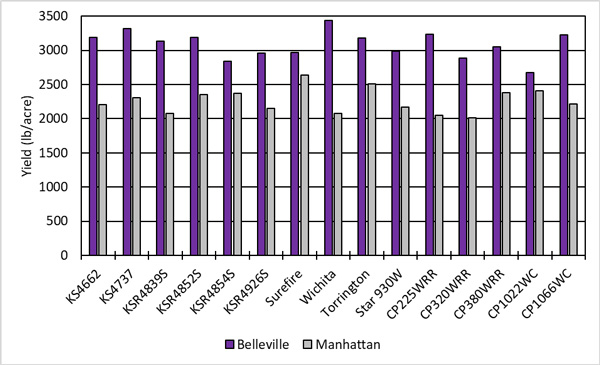
Figure 1. Yield results for northern Kansas (Belleville, Manhattan) OP variety trials. Manhattan LSD (0.05) = 319 lb/acre.
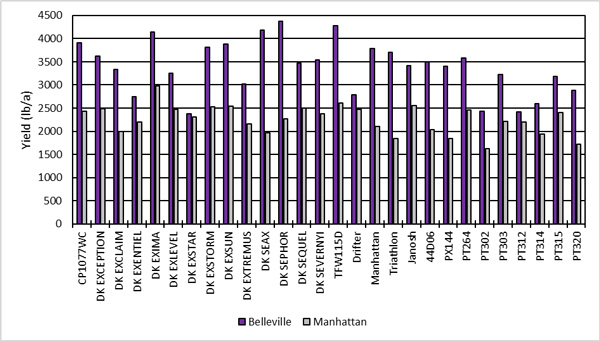
Figure 2. Yield results for northern Kansas (Belleville, Manhattan) hybrid variety trials. Belleville LSD (0.05) = 921 lb/acre; Manhattan LSD (0.05) = 611 lb/acre.
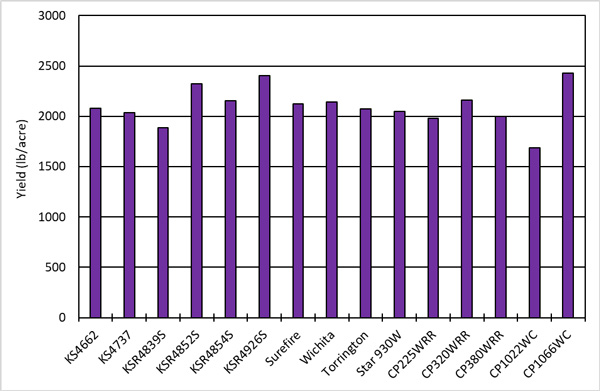
Figure 3. Yield results for central Kansas (Hutchinson) OP variety trial.

Figure 4. Yield results for central Kansas (Hutchinson) hybrid variety trial. LSD (0.05) = 631 lb/acre.
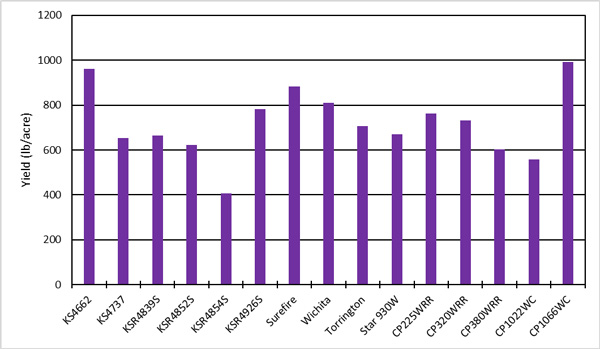
Figure 5. Yield results for southwest Kansas (Garden City) OP variety trial. LSD (0.05) = 288 lb/acre.
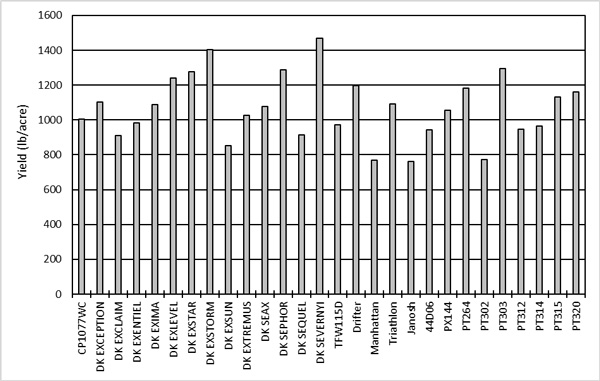
Figure 6. Yield results for southwest Kansas (Garden City) hybrid variety trial. LSD (0.05) = 353 lb/acre.
Careful variety selection is very important for successful winter canola production. Watch future Agronomy eUpdates for a discussion to help with variety selection and planting practices.
Mike Stamm, Canola Breeder
mjstamm@ksu.edu
John Holman, Cropping Systems Agronomist
jholman@ksu.edu
Scott Dooley, Agronomist-in-Charge, North Central Kansas Experiment Field
sjdooley@ksu.edu
Jane Lingenfelser, Interim Manager, South Central Kansas Experiment Field
jling@ksu.edu